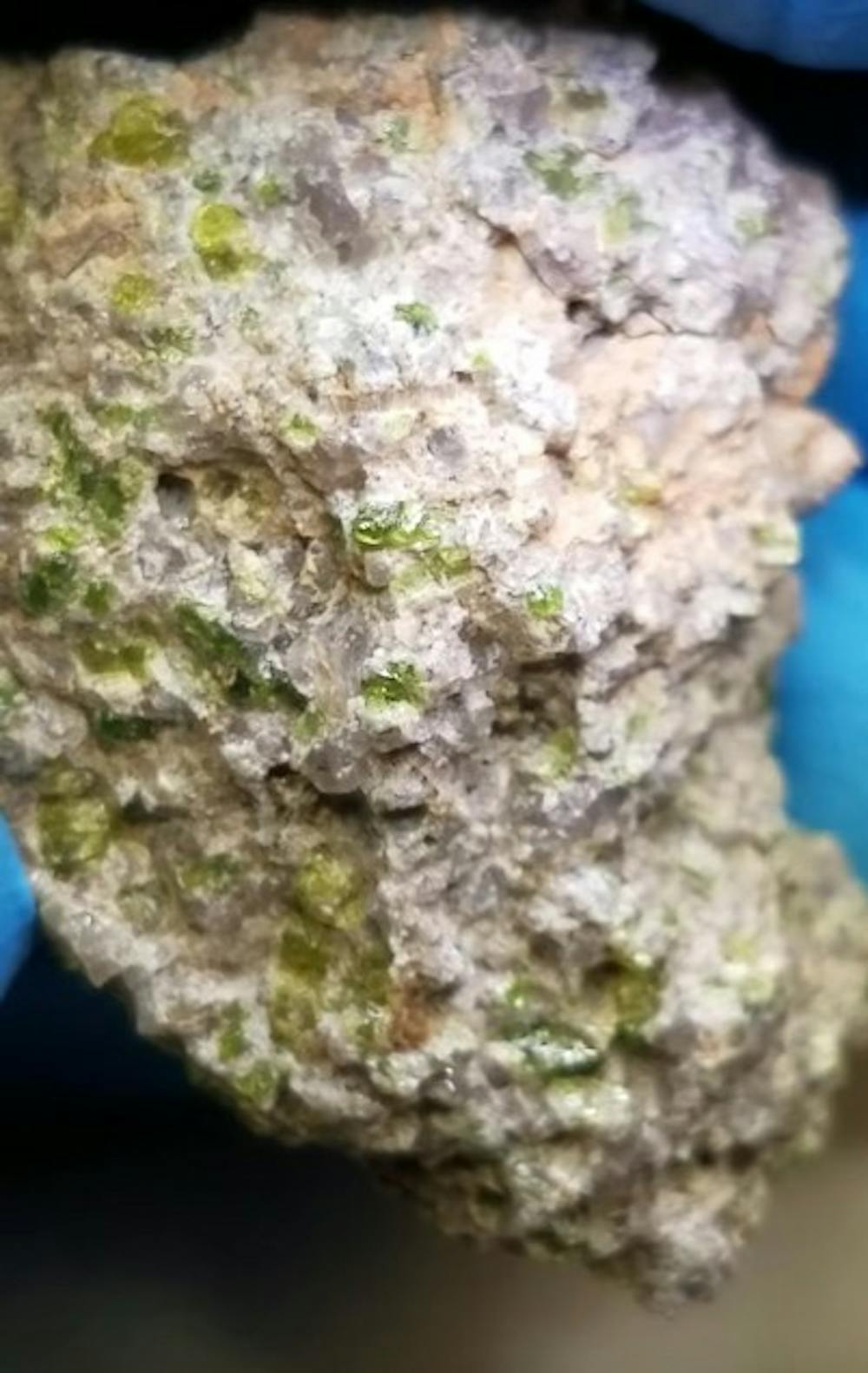Researchers at the University of New Mexico, NASA’s Johnson Space Center and Arizona State University recently had their research titled Silica-rich volcanism in the Early Solar System Dated at 4.565 Ga published in Nature Communications after uncovering the oldest igneous meteorite on record.
The meteorite, known as Northwest Africa (NWA) 11119, is 4.6 billion years old, making it 65 million years older than Earth and 2 million years younger than the earliest fragments of the solar system, according to UNM professor and Director of the Institute of Meteoritics Carl Agee.
The rock was found by a nomad in Mauritania, Africa and sold to a meteorite dealer who sent a piece of it to Agee.
“It was a beautiful sample,” Agee said. “It was strikingly beautiful in color and it sparkled. So I thought, ‘Oh this is a gorgeous rock sample, but I kind of doubt if it’s a meteorite.’”
Despite his initial doubts, Agee did an electron microprobe analysis of the sample, which suggested that it was in fact a meteorite.
“Based on the initial results of that, it pointed me in the direction that it was indeed a meteorite,” he said. “It was exciting, because it was a meteorite that just looked like nothing else I have ever seen before.”
Agee gave the sample to Poorna Srinivasan, a planetary geology graduate student, to study as part of her thesis.
“I told her, ‘Well if this turns out to be a meteorite it will be a good one,’” he said. “It’s going to be very interesting.”
With the help of NASA, Srinivasan found that the composition of the meteorite shared some similarities with earth.
“NWA 11119 has a composition that is Andesitic-dacitic, which indicates a more chemically evolved or processed crust,” she said. “The majority of crustal rocks in our solar system (other than planets, moons and asteroids) are basaltic, similar to Earth’s oceanic crust.”
Agee said the sample was very unique in that one of the minerals in its composition, tridymite, is similar to the mineral quartz that is found in rocks on Earth.
“It was very unusual in that it was more like the Earth than like other meteorites,” he said. “About 30 percent of it was made up of (tridymite)... It’s the sort of thing you would see in common rock on Earth like granite in the Sandia Mountains.”
Get content from The Daily Lobo delivered to your inbox
The team took their research a step further and determined the age of the rock with the help of researchers at ASU.
“They said you would not believe it, but this sample is the oldest meteorite we have ever measured. It’s the most ancient meteorite to be found that is of volcanic origin,” Agee said. Adding that the meteorite’s formation took place before Earths.
Srinivasan said this is interesting because it shows that volcanic rocks were forming earlier in the solar system’s history than previously thought.
“So we have a crust from an asteroid that’s chemically evolved, but formed before the assembly of Earth and the other planets,” she said. “This meteorite largely extends the known range of volcanic rocks that were forming in the early solar system.”
She said the discovery provides a lot of knowledge, but also a lot of questions about how a planet’s crust is formed.
Despite the progress that has been made, Srinivasan said there is still more research that needs to be done to understand this meteorite.
“This paper only has our initial findings. We still need to figure out if NWA 11119 has connections to other known meteorites, and it would be great to conduct experiments to see what conditions NWA 11119 could have formed under,” she said.
Mikhaela Smith is a news reporter at the Daily Lobo. She can be contacted by email at news@dailylobo.com or on Twitter @MikhaelaSmith18.






